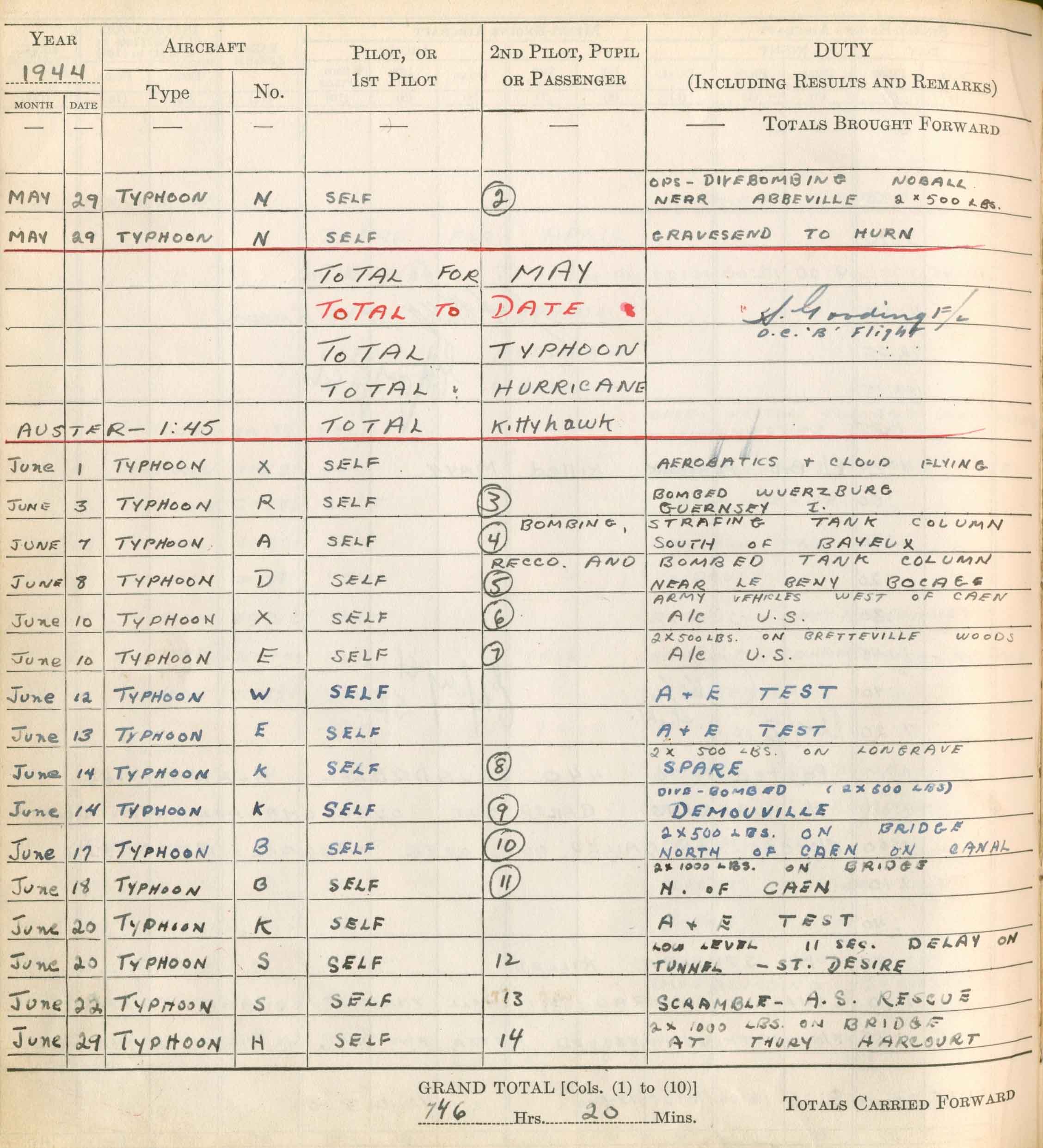
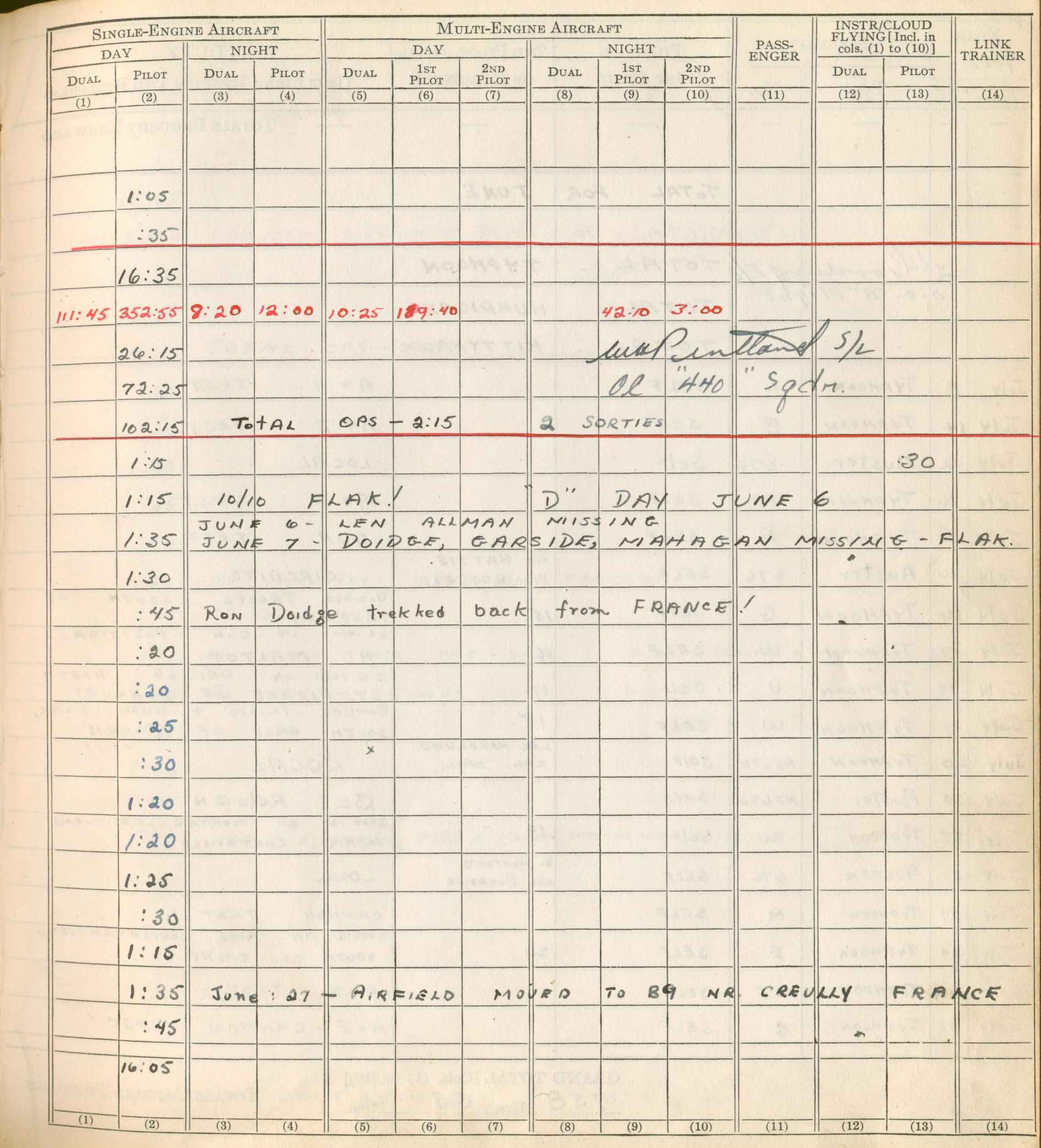
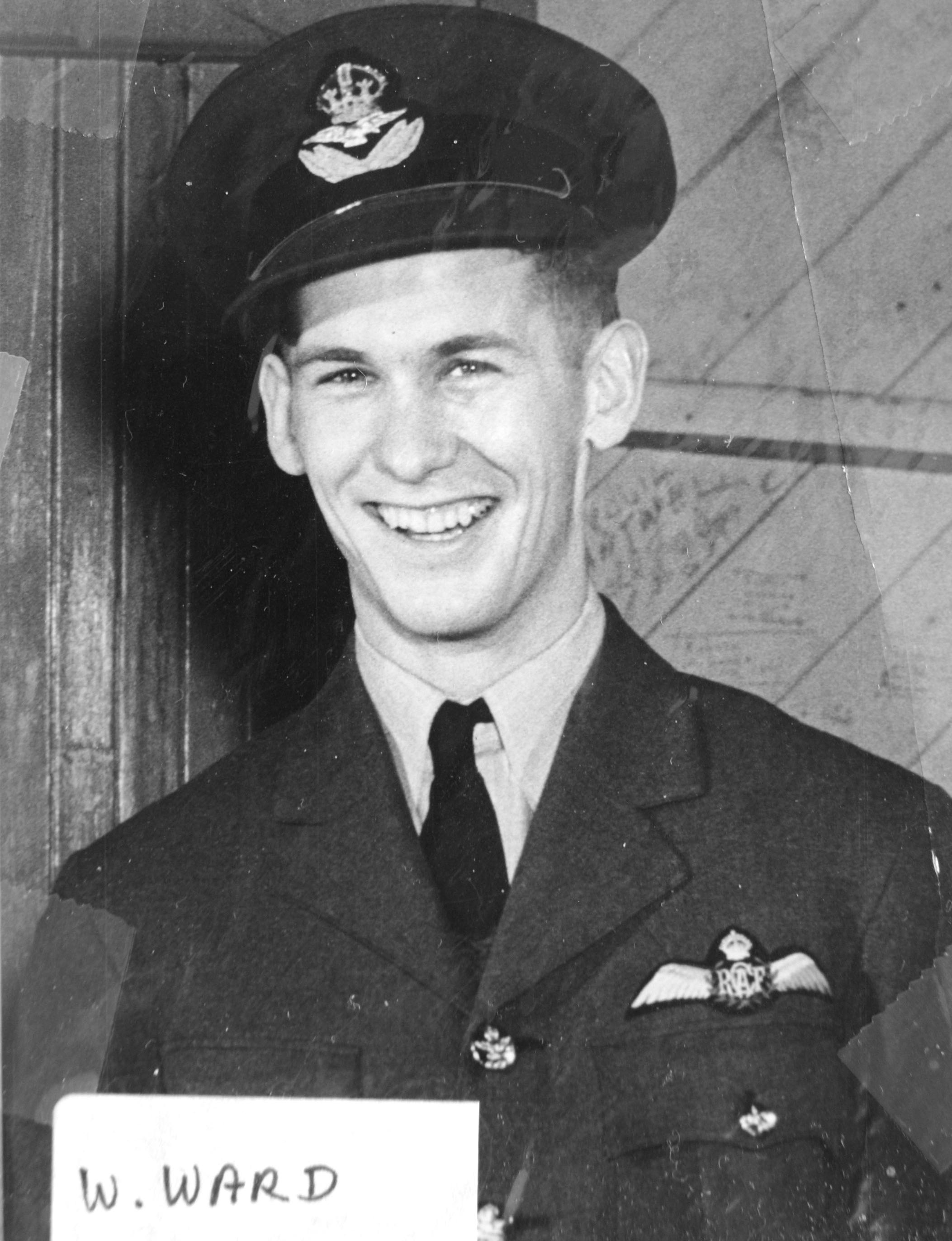
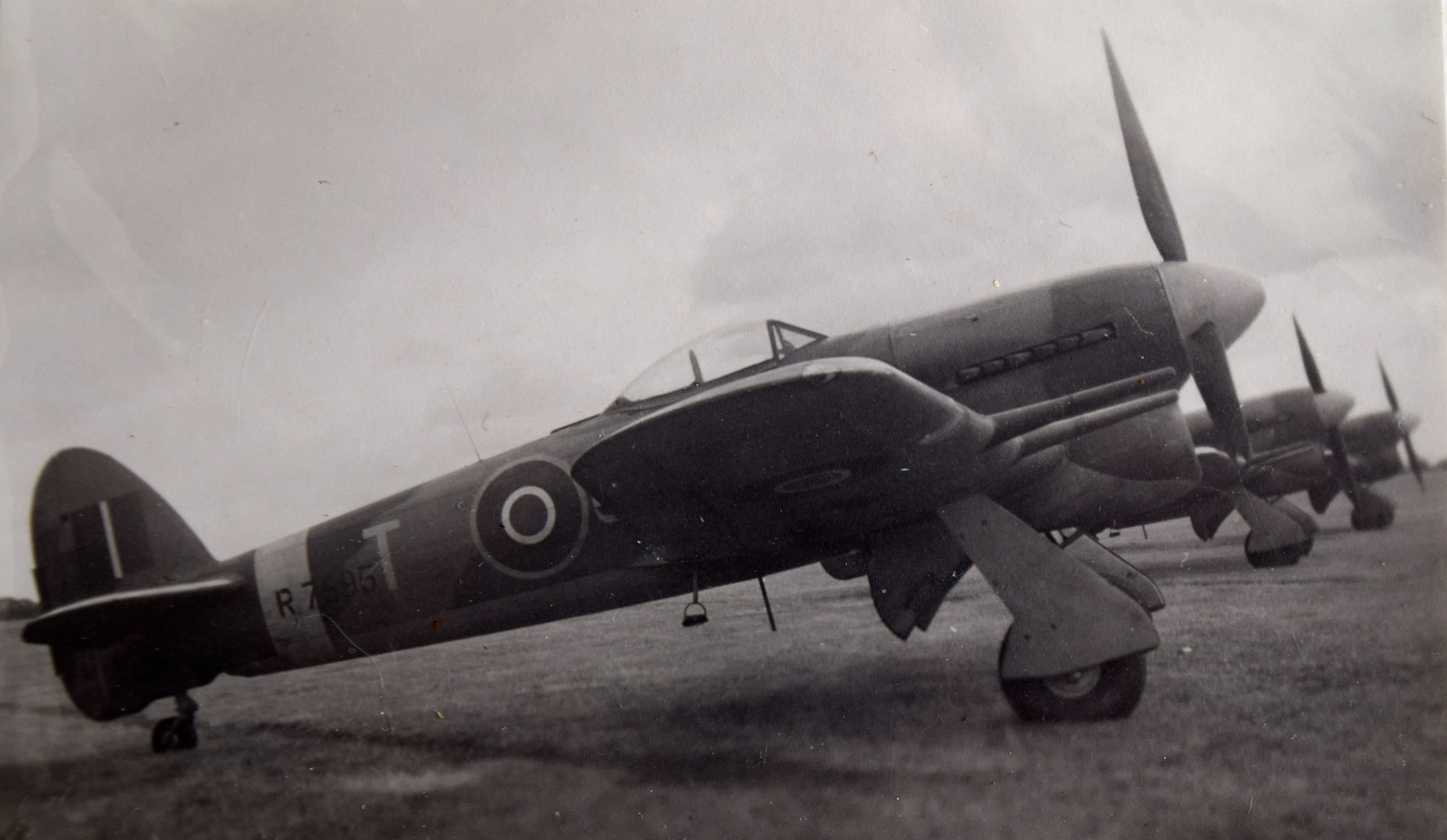
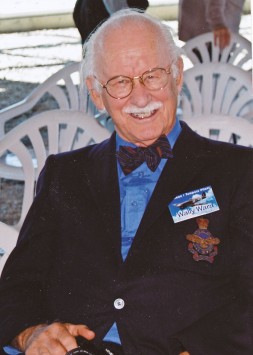

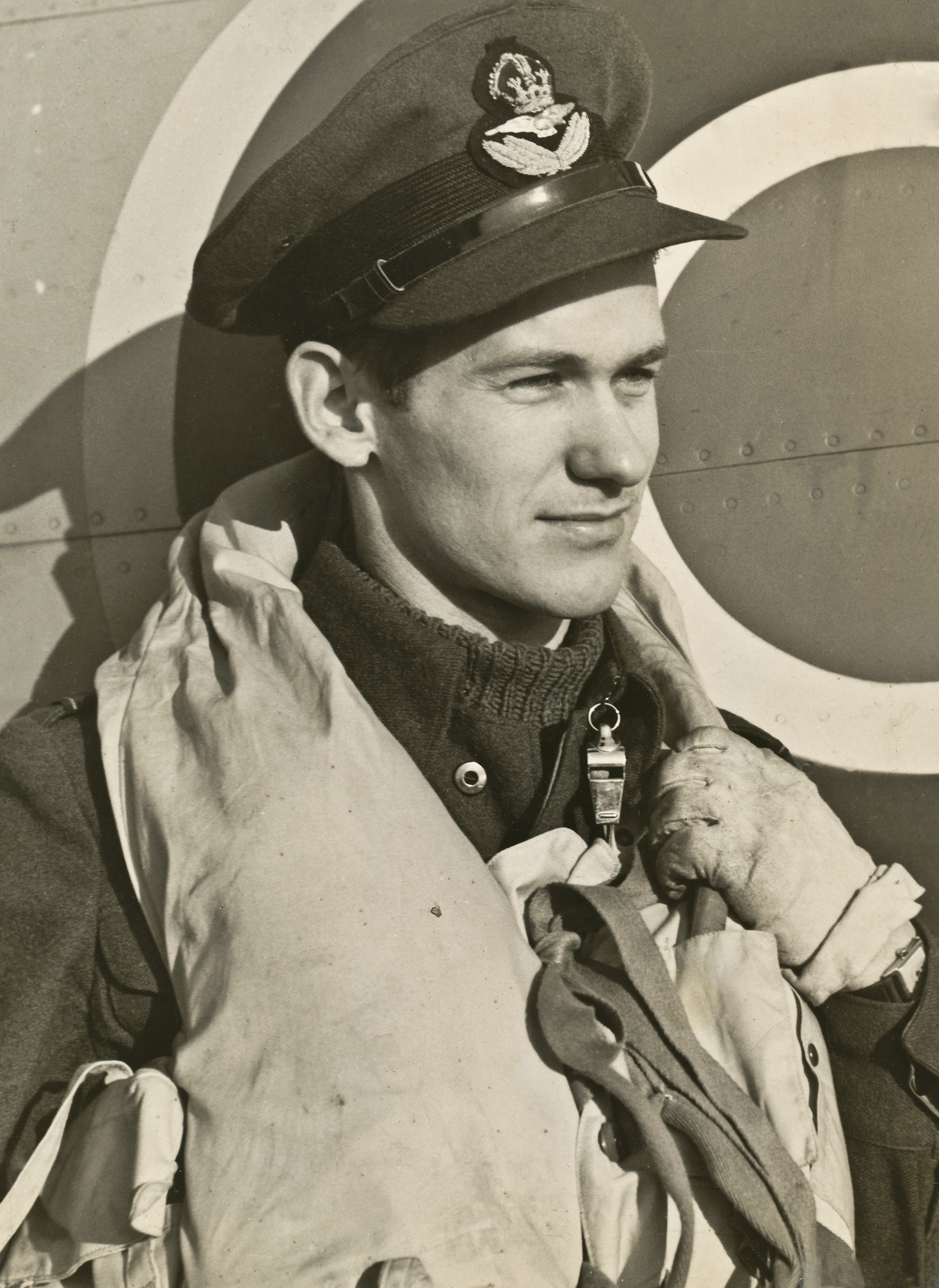
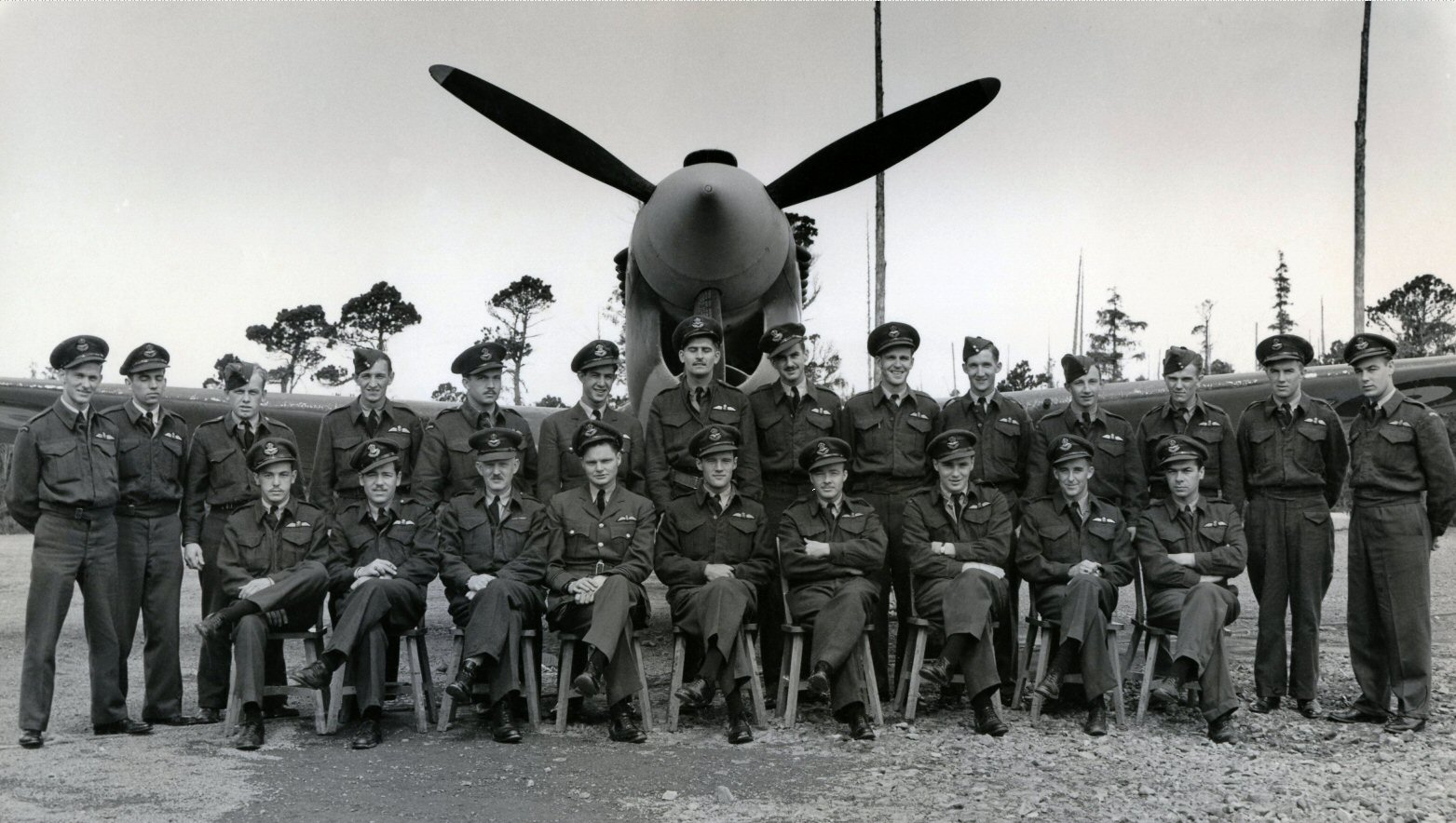
May 14, 1923 to May 30, 2019








Walter aka Wally Ward was from Scarborough, Ontario and resided with his wife, Marjorie, in Mississauga, Ontario.
His pilot's wings were presented by Billy Bishop. During the Second World War, Ward flew more than 100 operations as a pilot with RCAF 440 Squadron, including D-Day.
Stories from Wally, from interview with Anne Gafiuk, July 2017
Ward was an eye witness to Operation Bodenplatte on January 1, 1945.
I was standing behind some shelter at the edge of the field. I had just finished my tour and was waiting to be posted out of 440 Squadron. I was being sent to instruct on Typhoons at an aerodrome near Newcastle, which I did for five months. The squadron was lined up to take off. I saw I saw the Messerschmitt 110s came over the horizon one after the other. They shot the hell out of the Typhoons. They circled and went back again -- more than one attack. The pilots jumped out of the planes and rolled away. They looked for a ditch or something for refuge.
A Messerschmitt 262 was directing the attack. It was circling the airfield about 5000 feet. It was directing the attack. The Me were lined up like they were on a game shoot. There was no resistance. We hardly ever saw enemy aircraft. We had the dominance of the skies. This was my first chance to see enemy aircraft....dozens of them. I was in shock. I was absolutely astonished. We could not fire on them. The RAF regiment needed a command to fire on enemy aircraft -- the needed permission because they had been firing on Typhoons.... The RAF regiment got into difficulty -- they were supposed to be defending us. On that morning, all the lines feeding into the anti-aircraft gun positions had been cut by saboteurs.
I had to fly to Brussels. All these heavy bombers were all shot up -- B27s, maybe -- they were completely destroyed. They had not been dispersed. When we had our Typhoons, we had them spread out, just in case of such an attack. We dispersed them.
This attack was a last kick at the can for the Nazis. We never thought it could happen. Factor: the night before, we had been celebrating New Year's. We had a mess with a bar. On one occasion, a couple of our pilots took a truck and got some Five Star cognac. There definitely was alcohol. We would fill up a spare gas tank -- we'd bring back a lot of beer -- we'd fly to England.... 20 minutes to get across the Channel -- 45 minutes round trip. Clean up came in; organized confusion; no one in my squadron got hurt.
There was an intelligence officer on our Squadron: Hart Massey -- he was a member of the famous Massey family. He had his office -- in a trailer right at the edge of the airfield. At the time of the attack, he stepped out of his accommodation, and he was hit. He was lying unconscious on the ground. When the rescuers came on to the scene, they looked at him; there was a mark on both sides of his head -- he was grazed on each temple by separate bullets. He survived! He went on to lead a successful life.
Ward flew thirteen different aircraft during the war.
Following the war, Ward attended university, graduating with an Honours Degree in English, Language and Literature and began his teaching career at Graydon Memorial Secondary School in Mississauga in 1956, first starting out as an English teacher, then heading the English department. He later became principal from 1965 to 1973. Later in his teaching career, he looked after the summer school, adult education and the alternative school, IndEC South School, in Mississauga, as well as Continuing Education. He retired in 1987.
LINKS: